 Last additions - Kyoto city 京都市 Last additions - Kyoto city 京都市 |

Bridge to Benten-shima on Hojo-ike Pond.Jan 16, 2017
|
|

Jan 16, 2017
|
|

View from the two-story Tahoto pagoda on the hillside at Eikando.Jan 16, 2017
|
|

View from the two-story pagoda on the hillside. This would be a sea of red during the peak period. I have to come back here.Jan 16, 2017
|
|

The two-story pagoda (Tahoto) is a short climb up the stairs. Worth the view.Jan 16, 2017
|
|

Hojo-ike Pond. The two-story pagoda (Tahoto) in the distance.Jan 16, 2017
|
|

Hojo-ike Pond. Notice the two-story pagoda (Tahoto) in the distance.Jan 16, 2017
|
|

Jan 16, 2017
|
|

Miei-do Hall (Daiden)Jan 16, 2017
|
|

Miei-do Hall (Daiden)Jan 16, 2017
|
|

Jan 16, 2017
|
|

Jan 16, 2017
|
|

Jan 16, 2017
|
|

Yasuragi Kannon statue at the bottom of the steps of Amida-do Hall.Jan 16, 2017
|
|

Jan 16, 2017
|
|

Yasuragi Kannon at EikandoJan 16, 2017
|
|

Jan 16, 2017
|
|

Jan 16, 2017
|
|

Jan 16, 2017
|
|

Temple bellJan 16, 2017
|
|

Amida-do HallJan 16, 2017
|
|

Amida-do HallJan 16, 2017
|
|

Jan 16, 2017
|
|

Roof of the Mieei-do Hall.We were not allowed to photograph inside the temple buildings.Jan 16, 2017
|
|

Jan 16, 2017
|
|

Jan 16, 2017
|
|

Jan 16, 2017
|
|

Jan 16, 2017
|
|

Jan 16, 2017
|
|

Courtyard garden seen from the Shaka-do Hall.Jan 16, 2017
|
|

Jan 16, 2017
|
|

Courtyard garden seen from the Shaka-do Hall.Jan 16, 2017
|
|

Courtyard gardenJan 16, 2017
|
|

Main entrance to the temple.Jan 16, 2017
|
|

Jan 16, 2017
|
|

Jan 16, 2017
|
|

Jan 16, 2017
|
|

Jan 16, 2017
|
|

Jan 16, 2017
|
|

Jan 16, 2017
|
|

Jan 16, 2017
|
|

Whoever landscaped or designed the temple grounds was an artistic genius.Jan 16, 2017
|
|

Eikando temple, KyotoJan 16, 2017
|
|

Even the shape and placement of the trees are so artistic.Jan 16, 2017
|
|

Jan 16, 2017
|
|

Everywhere you look in Eikando is so utterly photogenic, or should I say paint-genic since they didn’t have cameras when the temple was built. Everywhere looks like a scene from a classic Japanese painting.Jan 16, 2017
|
|

Jan 16, 2017
|
|

Jan 16, 2017
|
|

This path of maples would be redder a several days earlier. Path to Miei-do Hall.Jan 16, 2017
|
|

Jan 16, 2017
|
|

Jan 16, 2017
|
|

When you first enter Eikando temple in Kyoto, this is what you see. A hint of more to come.Jan 16, 2017
|
|

Jan 16, 2017
|
|

Eikando is a Jodo-shu Buddhist temple famous for autumn foliage, especially red maples. One of Kyoto's most photogenic spots for fall leaves.Jan 16, 2017
|
|
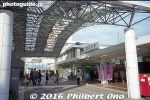
JR Yamashina StationOct 03, 2016
|
|

Keihan Yamashina Station is right next to JR Yamashina Station on the right.Oct 03, 2016
|
|
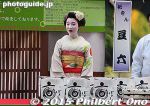
Maiko promoting a local product at Kyoto Station.Sep 27, 2016
|
|

Sep 27, 2016
|
|

Sep 27, 2016
|
|

Closeup of Nijo Castle's Karamon GateSep 27, 2016
|
|

Closeup of Nijo Castle's Karamon GateSep 27, 2016
|
|
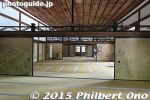
Inside RyoanjiSep 27, 2016
|
|
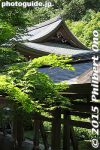
RyoanjiSep 27, 2016
|
|

Sep 27, 2016
|
|
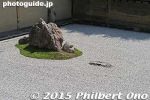
Ryoanji rock garden. Sep 27, 2016
|
|
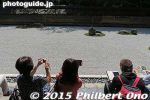
Sep 27, 2016
|
|
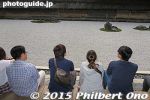
Sep 27, 2016
|
|
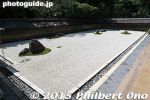
Ryoanji temple in Kyoto has Japan's most famous rock garden. Sep 27, 2016
|
|
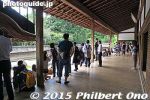
Ryoanji templeSep 27, 2016
|
|

Tatami mat shopSep 27, 2016
|
|

Tatami mat shop in a thatched roofed building.Sep 27, 2016
|
|

19th Century Hall, SL & Piano Museum and sculpture of locomotive wheels.Sep 27, 2016
|
|

19th Century Hall, SL & Piano MuseumSep 27, 2016
|
|

Misora Hibari Museum in Arashiyama.Sep 27, 2016
|
|

Sep 27, 2016
|
|

Sep 27, 2016
|
|

Sep 27, 2016
|
|

Sep 27, 2016
|
|

TenryujiSep 27, 2016
|
|
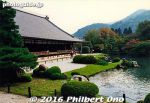
Tenryuji's Japanese garden.Sep 27, 2016
|
|
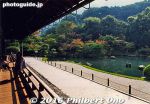
Tenryuji's Japanese garden.Sep 27, 2016
|
|

Tenryuji temple's Kuri building.Sep 27, 2016
|
|

Tenryuji is a UNESCO World Heritage Site, part of the "Historic Monuments of Ancient Kyoto".Sep 27, 2016
|
|

Tenryuji temple is the main temple of one of the 15 branches of the Rinzai school of Zen Buddhism.Sep 27, 2016
|
|

Tenryuji templeSep 27, 2016
|
|

Arashiyama's famous bamboo grove.Sep 27, 2016
|
|
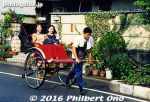
Getting around Arashiyama by rickshaw is popular.Sep 27, 2016
|
|

Sep 27, 2016
|
|

Yakata-bune boat steerer.Sep 27, 2016
|
|

Ukai cormorant fishing on the river at Arashiyama was quite enjoyable. It's cheaper than in Gifu, and the cormorants passed by maybe 6 times.Sep 27, 2016
|
|

Gifu is not the only place where you can see ukai cormorant fishing.Sep 27, 2016
|
|

The boats are hitched together.Sep 27, 2016
|
|

On board a yakata-bune to view ukai cormorant fishing. Fits about 10 people.Sep 27, 2016
|
|

The ukai cormorant boats operate twice each evening at 7 pm and 8 pm (6:30 pm and 7:30 pm in Sept.). ¥1,800 for adults and ¥900 for kids age 4–12.Sep 27, 2016
|
|

From July 1 to Sept. 23, Arashiyama also has ukai cormorant fishing. Buy your tickets at this booth slightly upstream from Togetsukyo Bridge.Sep 27, 2016
|
|

Deluxe boat for seeing cormorant fishing.Sep 27, 2016
|
|

Deluxe boat for seeing cormorant fishing.Sep 27, 2016
|
|

Boats for seeing cormorant fishing.Sep 27, 2016
|
|

Yakata-bune boat ride at Arashiyama, Kyoto.Sep 27, 2016
|
|

Sep 27, 2016
|
|

Sep 27, 2016
|
|

Sep 27, 2016
|
|

Sep 27, 2016
|
|

Sep 27, 2016
|
|

Sep 27, 2016
|
|

Sep 27, 2016
|
|

Sep 27, 2016
|
|

Togetsukyo Bridge 渡月橋 Sep 27, 2016
|
|

Togetsukyo Bridge 渡月橋 Sep 27, 2016
|
|

Sep 27, 2016
|
|

Togetsukyo Bridge 渡月橋 Sep 27, 2016
|
|

Sep 27, 2016
|
|

Sep 27, 2016
|
|

Fake geisha at Arashiyama, Kyoto. (Tourists who got a geisha makeover and tour famous spots to get their pictures taken.)Sep 27, 2016
|
|

Togetsukyo Bridge 渡月橋 Sep 27, 2016
|
|

Arashiyama is a National Historic Site and Place of Scenic Beauty. This is the Oi River.Sep 27, 2016
|
|

Arashiyama is another major tourist spot in Kyoto with a river, bridge, boat rides, temples, cormorant fishing, and more. Saga-Arashiyama Station is one rail station near Arashiyama.Sep 27, 2016
|
|
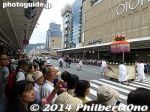
Shijo-dori going to Yasaka Shrine.Aug 03, 2014
|
|
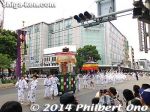
Shijo-doriAug 03, 2014
|
|
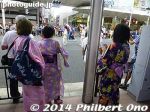
Aug 03, 2014
|
|
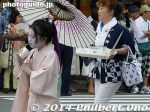
Aug 03, 2014
|
|

Lantern dancersAug 03, 2014
|
|
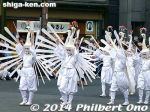
Heron dancersAug 03, 2014
|
|

Geisha/geiko from Gion Kobu.Aug 03, 2014
|
|
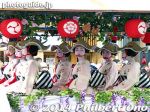
Geisha/geiko from Gion Kobu.Aug 03, 2014
|
|
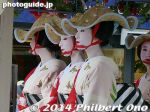
Geisha/geiko from Gion Kobu.Aug 03, 2014
|
|
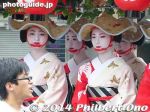
Geisha/geiko from Gion Kobu.Aug 03, 2014
|
|

Geisha/geiko from Gion Kobu.Aug 03, 2014
|
|

Geisha/geiko from Gion KobuAug 03, 2014
|
|
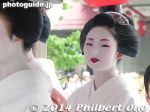
Geisha/geiko from Miyagawa-cho.Aug 03, 2014
|
|
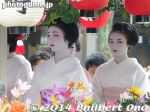
Geisha/geiko from Miyagawa-cho.Aug 03, 2014
|
|
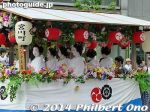
Geisha/geiko from Miyagawa-cho.Aug 03, 2014
|
|
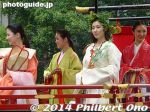
Kimono beautiesAug 03, 2014
|
|
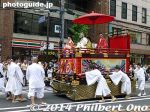
The parasol floats are reminiscent of Gion Matsuri's earliest floats.Aug 03, 2014
|
|
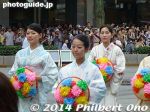
Hanagsa beauties.Aug 03, 2014
|
|
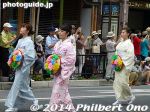
Aug 03, 2014
|
|

Aug 03, 2014
|
|

Aug 03, 2014
|
|
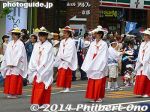
Aug 03, 2014
|
|
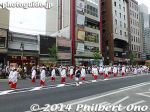
Aug 03, 2014
|
|
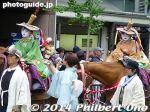
Aug 03, 2014
|
|

Aug 03, 2014
|
|
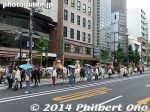
Aug 03, 2014
|
|
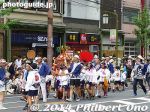
When the Saki Matsuri and Ato Matsuri's processions were combined on July 17, 1966, the Hanagasa Parade was started on July 24, 1966 to compensate for the Ato Matsuri's procession. Aug 03, 2014
|
|
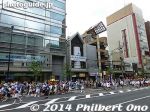
The Hanagasa Parade (花傘巡行) is a parade of mostly children and women accompanied by flowery parasol floats. It starts (10 am) and ends (noon) at Yasaka Shrine. On Kawaramachi-dori road, they follow right after the main float procession.Aug 03, 2014
|
|

Gion Matsuri now has two boat floats. The boat float (Fune-hoko) in the Saki Matsuri procession is said to be going to battle, while the Ofune-hoko is on a triumphant return from battle. Both boat floats worship the legendary Empress Jingu.Aug 03, 2014
|
|
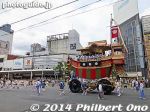
During the Ofune-hoko's 500-year history, it repeatedly suffered from fires, but was rebuilt each time until 1864 when it caught fire caused by a skirmish (Hamaguri Gate Rebellion 蛤御門の変) at the Kyoto Imperial Palace.Notice the boat rudder.Aug 03, 2014
|
|
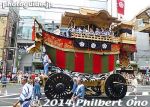
Meet Gion Matsuri's new boat float, Ofune-hoko.Aug 03, 2014
|
|

The new boat float (Ofune-hoko) rejoins the Gion Matsuri after a 150-year absence. It always appears last in the float procession.Aug 03, 2014
|
|
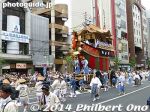
Aug 03, 2014
|
|
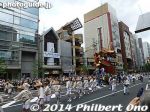
Aug 03, 2014
|
|
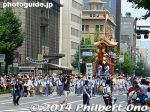
Costing over US$10 million, this float always appears last in the Ato Matsuri. It rejoins the Gion Matsuri after being absent for 150 years when the previous float was caught in a fire in 1864.Aug 03, 2014
|
|
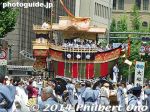
Ofune-hoko 大船鉾 - Gion Matsuri's brand new float parading for the first time today on July 24, 2014. Aug 03, 2014
|
|

Kuronushi-yama 黒主山 - From the Noh play called "Shiga," it shows 10th-century poet Otomo no Kuronushi looking up at cherry blossoms.Aug 03, 2014
|
|

En no Gyoja-yama 役行者山 - Depicts En-no-Gyoja, in the middle, an ascetic who had Hitokoto Nushi (standing on left) build a stone bridge between Katsuragi and Mt. Omine in Nara. On the right is the Goddess Katsuragi.Aug 03, 2014
|
|
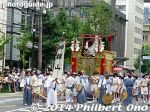
Koi-yama 鯉山 - Shows a carp (koi) swimming up a ryumon waterfall to become a dragon. The tapestries, depicting the Trojan War, were made in Belgium in the 16th century. (Important Cultural Properties)Aug 03, 2014
|
|
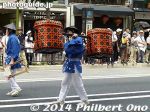
Aug 03, 2014
|
|
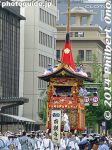
Minami Kannon-yama 南観音山 - Worships Yoryu Kannon (揚柳観音), which dispels illness. The large willow branch also dispels illness. Medicine balls are on the four corners.Aug 03, 2014
|
|

Minami Kannon-yama about to turn at the Kyoto City Hall corner.Aug 03, 2014
|
|

Suzuka-yama 鈴鹿山 - Dedicated to the goddess Suzuka who lives in the Suzuka Mountains and eliminated the demon terrorizing local residents and travelers to Ise. She wears a gold eboshi hat.Aug 03, 2014
|
|

Aug 03, 2014
|
|
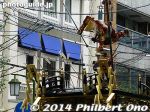
Jomyo-yama 浄妙山 - Depicts the famous 12th-century battle between the Heike and Genji Clans at Uji River in Kyoto in the Tale of the Heike. It shows warrior-monk Ichirai jumping over Jomyo to take credit as the first to engage the enemy.Aug 03, 2014
|
|
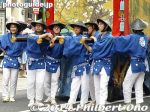
Aug 03, 2014
|
|
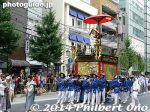
Jomyo-yama 浄妙山Aug 03, 2014
|
|

Jomyo-yama 浄妙山Aug 03, 2014
|
|

Kawaramachi-dori going to Shijo-dori road.Aug 03, 2014
|
|
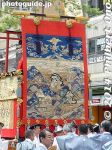
Aug 03, 2014
|
|
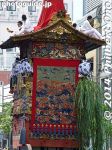
Aug 03, 2014
|
|
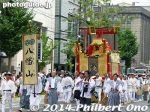
Hachiman-yama 八幡山 - Worships the god Hachiman in a miniature shrine, whose spirit was transferred from the local Hachiman-gu shrine.Aug 03, 2014
|
|
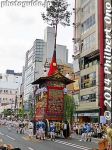
A large willow branch sticks out from the rear.Aug 03, 2014
|
|

Kita Kannon-yama 北観音山 - Worships Yoryu Kannon (揚柳観音) to dispel illness, and Idaten, a guardian deity. Aug 03, 2014
|
|
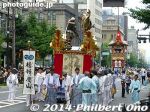
Hashi Benkei-yama 橋弁慶山 - From the famous Noh play called "Hashi Benkei," it shows the fight scene between Benkei and Ushiwakamaru at Gojo Ohashi Bridge in Kyoto.Aug 03, 2014
|
|
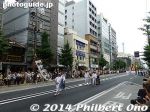
The start of the Gion Matsuri Ato Matsuri yama-hoko procession on July 24, 2014. Held 1 week after the main Saki Matsuri procession on July 17.Aug 03, 2014
|
|

My video of the Gion Matsuri Saki Matsuri procession on July 17.Aug 03, 2014
|
|

My video of the Gion Matsuri Ato Matsuri procession on July 24, 2014 held for the first time in 49 years.Aug 03, 2014
|
|

Video of our group photo exhibition at Kyoto International Community House during Nov. 16-20, 2011. Seven artists exhibited: Micah Gampel, Peter Macintosh, Motoyasu "Musashi" Matsutani. We talk about our work in this 25-min. vid.Nov 28, 2011
|
|

Nov 27, 2011
|
|

Nov 27, 2011
|
|
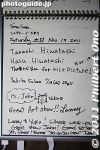
Thanks to all who visited our exhibition.Nov 27, 2011
|
|

A few pages from our Guest Book that visitors signed.Nov 27, 2011
|
|
|
|
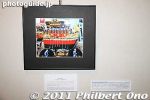
Gion MatsuriNov 27, 2011
|
|
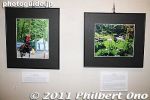
YabusameNov 27, 2011
|
|
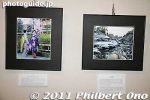
Nov 27, 2011
|
|
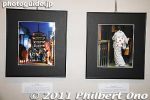
The photo of the back of a kimono woman was his favorite.Nov 27, 2011
|
|

Photos of Taizo-in temple, festivals, and people.Nov 27, 2011
|
|

"I LOVE KYOTO" is the title of his photos.Nov 27, 2011
|
|

Motoyasu "Musashi" Matsutani showed scenic photos of Kyoto. These photos were also displayed the week before at a martial arts event in in Los Angeles, CA.Nov 27, 2011
|
|

A sample of Micah's work. See Micah's Web site at micahgampel.com.Nov 27, 2011
|
|

Micah explains his photos to the crowd.Nov 27, 2011
|
|

Many of the prints were taken especially for this exhibition, displayed for the first time.Nov 27, 2011
|
|
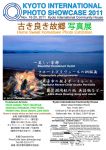
Official flyer for Kyoto International Photo Showcase 2011.Nov 27, 2011
|
|

On a back wall, Micah Gampel showed numerous small self-portraits of himself at his friends' homes in a series titled, "My Furukiyoki Furusato is My Friends."Nov 27, 2011
|
|
|
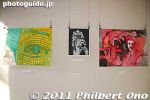
More work by John Wells.Nov 27, 2011
|
|

Nov 27, 2011
|
|
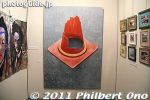
A large photo realistic painting of a broken traffic cone, also by John Wells.Nov 27, 2011
|
|
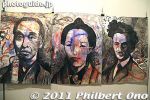
Faces we see on the 10000-yen, 5000-yen, and 1000-yen bills.Nov 27, 2011
|
|
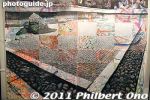
This work showing Ryoanji combines painting and photography. He made this painting just for this KIPS 2011 exhibition.Nov 27, 2011
|
|

John Wells' oil painting of Mt. Hiei at dusk as seen from his window at home.Nov 27, 2011
|
|

Nov 27, 2011
|
|
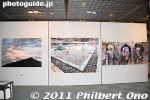
John Wells' large paintings of Mt. Hiei, Ryoanji, and the people on Japanese bills.Nov 27, 2011
|
|

Kyoto-based John Wells showed large paintings based on photographs. Nov 27, 2011
|
|
|

Visitors watch and hum along with the Lake Biwa Rowing music video on an iPad.Nov 27, 2011
|
|
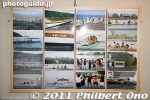
The eighth and last corkboard panel showed photos of various rowing clubs rowing around Lake Biwa. Imazu Jr. High Rowing Club, Kyoto University Rowing Club, and a FISA tour.Nov 27, 2011
|
|
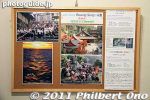
Verse 6. Rowing further down the eastern shore brings us to Omi-Hachiman, a old castle town and merchant town. One of its major temples is Chomeiji, dedicated to long life and good health and belonging to the Tendai Buddhist sect.Nov 27, 2011
|
|
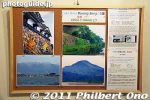
Verse 5. This is the only verse where the place is not specifically mentioned. The only hint is "old castle," which must be either Nagahama Castle or Hikone Castle. Nov 27, 2011
|
|
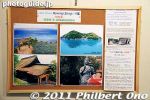
Verse 4. From Imazu, the boys rowed across the lake and most likely took a break at Chikubushima island in the middle of northern Lake Biwa. It has been a sacred island for centuries with Hogonji Buddhist temple (宝厳寺) first built in 724.Nov 27, 2011
|
|
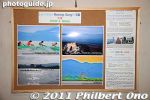
Verse 3. This verse is about a crossroads in life. It ponders over the question, "What do I want to do with my life?" Do we make life happen, or do we let life happen to us (rolling with the waves)?Nov 27, 2011
|
|

Photos of Verse 2 (Omi-Maiko). Although this song is about rowing around Lake Biwa, it is also widely interpreted as a song about life itself. Nov 27, 2011
|
|
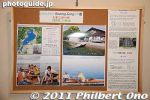
Photos of Verse 1. There are six verses, and each verse take you to a different place around the lake. Verse 1 starts in Otsu where the rowers departed in southern Lake Biwa.Nov 27, 2011
|
|

Philbert showed photos visually depicting Shiga's most famous hometown song about a rowing trip around Japan's largest lake by a bunch of rowers from a Kyoto university rowing club. Nov 27, 2011
|
|

Lake Biwa Rowing Song (Biwako Shuko no Uta) photos at Kyoto International Photo Showcase 2011 by Philbert Ono. I used eight large corkboards. First time to exhibit these photos in Kyoto.Nov 27, 2011
|
|

Next to the geisha photos was Philbert Ono's cove of photos introducing the Lake Biwa Rowing Song (Biwako Shuko no Uta).Nov 27, 2011
|
|

Peter MacIntosh explains his work to visitors. See Peter's Web site at petermacintosh.com.Nov 27, 2011
|
|

Standing here felt like you were surrounded by geisha.Nov 27, 2011
|
|

Nov 27, 2011
|
|
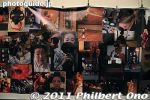
Nov 27, 2011
|
|

Nov 27, 2011
|
|
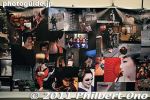
Nov 27, 2011
|
|

Peter MacIntosh's Kyoto geiko/maiko photos. A few photos were taken overseas when he took a few geiko for overseas events.Nov 27, 2011
|
|

Canadian Peter MacIntosh is the Geisha Guru. He created a 13-meter-long montage of his Kyoto geiko/maiko photos. Ten years worth of 250+ photos.Nov 27, 2011
|
|
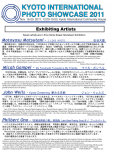
Bilingual biographies of Motoyasu Matsutani, Micah Gampel, John Wells, and Philbert Ono.Nov 27, 2011
|
|

Peter Miller explaining his work to visitors.Nov 27, 2011
|
|
|

Kamakura temples. Peter lives in Kamakura.Nov 27, 2011
|
|
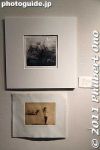
Peter Miller is one of the few artists who uses the traditional technique of copperplate photogravure. A copperplate is etched through a chemical process and then inked and pressed with paper to make prints.Nov 27, 2011
|
|

Bottom is a shot of Pittsburgh, PA taken when Peter was a young boy.Nov 27, 2011
|
|
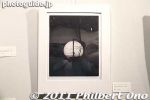
Meigetsuin temple in Kamakura with its famous moon-shaped window which opens to a Japanese garden. Also famous for hydrangeas in June.Nov 27, 2011
|
|
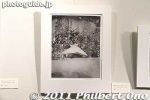
Snow in Muikamachi, Niigata.Nov 27, 2011
|
|
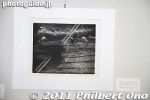
Rethatching a roof in Shirakawa-go, a World Heritage Site.Nov 27, 2011
|
|

Shirakawa-go (Gifu Prefecture) in winter snow by Peter Miller.Nov 27, 2011
|
|
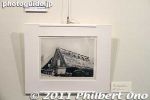
Peter Miller started his series with pictures of Shirakawa-go (Gifu Prefecture) in winter snow. The houses have steep, thatched roofs to dispel snow.Nov 27, 2011
|
|

Next was Peter Miller's copperplate photogravures of furusato (hometown) scenes in Japan. Nov 27, 2011
|
|
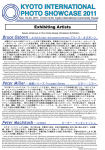
Bilingual biographies of Bruce Osborn, Peter Miller, and Peter MacIntosh.Nov 27, 2011
|
|
|
|
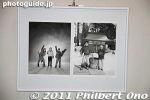
Oyako in winter. On the left is a portrait taken at Oku-Ibuki ski grounds and this Oyako operate the ski grounds.Nov 27, 2011
|
|

The city of Maibara is pursuing a Kizuna campaign in reference to the bond (kizuna) with family and one's hometown. The city thus commissioned Bruce to shoot outstanding Oyako living in Maibara.Nov 27, 2011
|
|
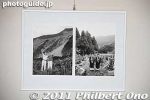
These portraits come from a larger exhibition at the Oyako Gallery in JR Maibara Station in northern Shiga Prefecture until March 2012.Nov 27, 2011
|
|

Bruce Osborn has been shooting Oyako portraits for 30 years. Many of them Japanese celebrities.Nov 27, 2011
|
|
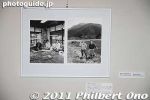
Bruce showed 12 portraits of his Oyako (Parent-child) portraits taken in Maibara, Shiga Prefecture which is next to Kyoto. The portraits were organized according to the four seasons starting with spring.Nov 27, 2011
|
|

We had seven artists showing their work. Six were American or Canadian, and one was Japanese. Three were from the Tokyo area, and the others live in Kyoto. The first wall showed these Oyako (Parent-child) portraits by Bruce Osborn.Nov 27, 2011
|
|
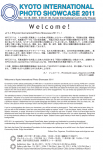
Welcome message to exhibition visitors.Nov 27, 2011
|
|

Another panorama shot of our exhibition room from a different corner of the room. The exhibition theme was "Home Sweet Hometown" or Furukiyoki Furusato.Nov 27, 2011
|
|

The 2nd floor has the Sister Cities Exhibition Room where we held our group photo exhibition. This is a panorama shot of what our exhibition room looked like.Nov 27, 2011
|
|
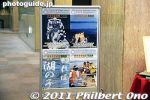
Our signboard next to the staircase and elevator going up to the 2nd floor.Nov 27, 2011
|
|
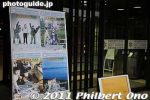
Near the front entrance is our signboard for Kyoto International Photo Showcase 2011 held during Nov. 16-20, 2011 featuring seven artists.Nov 27, 2011
|
|

Inside the 1st floor of the Kyoto International Community House is a staircase and elevator going up to the 2nd floor. We had a signboard for our exhibition here too.Nov 27, 2011
|
|
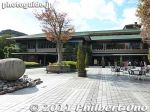
Kyoto International Community House (京都市国際交流会館) is near Keage Station on the Tozai subway line in Kyoto. It is near the famous Nanzenji temple, Keage Incline, and Lake Biwa Canal Museum.Nov 27, 2011
|
|
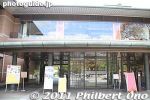
Front entrance of Kyoto International Community House, a municipal facility with event hall and conference rooms for rent and language/cultural classes for Kyoto's foreign community.Nov 27, 2011
|
|

Also watch my Karuta hajime video here.Jan 07, 2011
|
|
| 1707 files on 7 page(s) |
2 |  |
 |
 |
 |
|